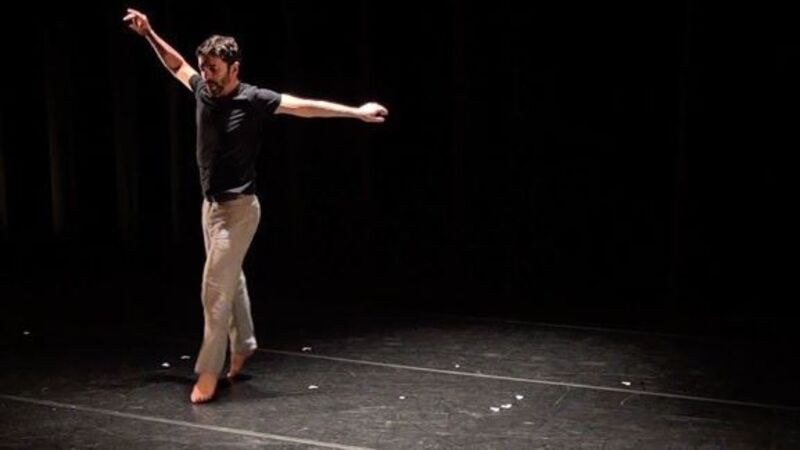Adding a new dimension

REMEMBER Glee 3D, Transformers: Dark Side of the Moon, and Jackass 3D? Of course you don’t. But they and other movies like them are responsible for the bad press that so quickly attached itself to 3D films, seemingly only minutes after James Cameron had appeared to make them respectable again.
The great Hollywood cash-in is something that irks another 3D trailblazer, Irish filmmaker Catherine Owens, who was behind another milestone of the form, 2006’s U2 3D, and has now directed something completely different, Sculpting Space, a documentary about the post-Riverdance reinvention of the English-born dancer Colin Dunne.
“I think Hollywood almost got it right,” she says ahead of her film’s premiere at the Jameson Dublin International Film Festival. “They started on the right foot but then a lot of very bad content came to the market, so the work that James Cameron would have done on Deepsea Challenge and on Avatar, and that we would have done on U2 3D, it really got lost amongst the complaints. But when those things came out first it was like, ‘Wow, this is incredible. Here we go’. But a lot of confidence was lost. A lot of people got cold feet — a lot of people who would have given the green light to a lot more beautiful creative, projects.”
Owens has worked with U2 for many years, supplying the visual content for their megatours. U2 3D, filmed in Buenos Aires during the band’s Vertigo world tour, was her first foray into any kind of filmmaking. It was, she recalls, a steep learning curve.
“It was very much in at the deep end. Totally. But because the live show is very like 3D — you’re dealing with depth, front to back, with lighting, with audience, with music — we really felt we were making a 3D performance anyway, so it was about trying to capture that.”
If there is a link between U2 3D and Sculpting Space, it is that both films deal with performers, and with translating a live experience onto the screen.
Sculpting Space was made with the backing of the Irish Film Board and BskyB, and it does feel like it’s been made for broadcast — an intimate, contemplative portrait of an artist, rather than a spectacular movie event. We follow Dunne through his re-education as a modern dancer, watching him rehearse in studios, or listening in on long conversations between him and collaborators such as Jean Butler.
In 3D this verges on making the viewer feel like an interloper, but it is an intriguing use of the medium. And when it comes to the performance scenes, there is none of that lifelessness that often is felt when theatre spaces are transposed to the screen.
The film’s understated, observational quality was very much the point of the exercise, says Owens. “This is not the spectacle of the global event, which U2 are when they take the show on the road. Here it was one performer, who knows about being the huge global event, too, of course. But I would never get that opportunity with U2, to go into this very personal space and see someone who has completely redefined their commitment to their talent and where they are going. He is saying to himself, ‘I need to do something here to change the way I dance.’”
Owens says she was also keen to show that 3D is now an accessible option for most filmmakers. “This is a cost-effective piece,” she says. “Sony just recently brought out a camera called a TD 300 which integrates stereoscopic lenses within the camera. Its price point is high if you are just starting — it’s $32,000 — but that’s against having a rig that would have cost $350,000.”
She compares this to the situation just seven years ago: “When we were working with U2 3D there were eight 3D cameras in existence in the world. Four of those cameras belonged to James Cameron, and four of them belonged to this company 3ality Digital, whom we made our film with. “The kind of operation that was on a $300,000 camera is now available in a $32,000 camera.”
At a lower price level again, JVC’s Prosumer 3D camera is about €2,000. “This can be done, especially in a college setting. You can bring a camera to train students at a price that’s going to be worth it. 3D is not going to go away, so who are the groups who are going to be making 3D in the future? It’s going to be young filmmakers, gamers, people who understand creativity in a different way.”
Owens says she cannot ever imagine making a film in plain old 2D. “Last year I shot at the Kumbh Mela and that’s part of an ongoing project — about why 50 million Hindus come to bathe once every 12 years in the Ganges.”
3D does seem like it’s here to stay, and even Hollywood appears to have gotten over its earlier giddy overkill, with films like Life of Pi doing much to rehabilitate the form. “3D is a tool,” says Owens. “Who with a creative brain cell wouldn’t want to do it after seeing Life of Pi? You can bring your own style to it. No matter what kind of work you do as a filmmaker, you can make the work yours. Unlike other forms, there are no limitations to what you can do within that depth of space.
“So if you look at it, not like film, but as a medium in its own right: how can I pull and push around my imagery within that? Then you can create a unique style. Look at all the good 3D out there, it’s very different.”
Certainly Sculpting Space is different to what has come before, and seeing it may open many more filmmakers to the potential of an increasingly accessible technique.










